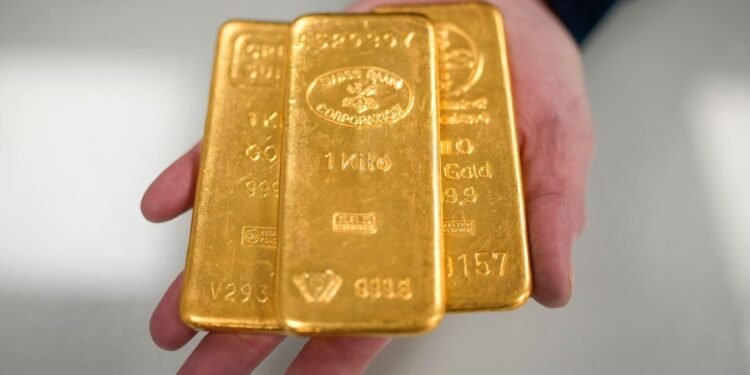Speculation and Market Volatility Surrounding Gold’s Surge
Overview
The remarkable surge of gold beyond the $3,000 per ounce threshold has sparked renewed interest in this precious metal, particularly in light of Bitcoin’s lackluster performance in recent times. Nonetheless, the substantial 40% surge in gold’s value over the past year raises doubts about the sustainability of this upward trend.
Professional Insights
Financial experts express apprehension over the rapid escalation of gold prices, warning that a steep climb could result in increased volatility. Factors propelling this surge include investor unease about the global economic landscape, worries about inflation, heightened central bank acquisitions, and escalating geopolitical tensions.
Market Environment
In the last 12 months, gold has enjoyed a significant price surge of $880 per ounce, equating to a 41% increase to hit around $3,030 per ounce. On the flip side, Bitcoin has faced a 22% decline, dropping by $23,772 to its current price of $82,921. The divergence between these two non-yield assets has become more pronounced, with gold climbing by 11% in just two months, as Bitcoin plummeted by 22%.
The surge in gold prices has had a positive impact on gold mining firms, notably industry leaders like Newmont, experiencing a 39% rise in share prices in tandem with the surge in gold value. Meanwhile, Barrick Gold’s stocks went up by 24%, indicating a somewhat slower pace compared to the gold increase.
Effect Assessment
Investor doubt regarding the sustainability of gold’s current price level is underlined by the ongoing merger deliberations between Northern Star Resources and De Grey Mining. This merger, valued at $3.1 billion and involving a share swap, is undergoing an exhaustive independent valuation overseen by KPMG, revealing a valuation mismatch. KPMG assessed De Grey’s value to be between AUD 1.68 and AUD 1.99, with Northern Star’s offer surpassing this midpoint, raising queries about the equity of the deal for its shareholders.
While these valuation concerns are apparent, Northern Star’s interest in De Grey likely stems from the latter’s possession of Australia’s largest undeveloped gold asset—the Hemi project, harboring an estimated 11 million ounces of gold. Furthermore, Northern Star might be inclined to present a competitive bid to deter potential rival offers from entities like Gold Road, holding a 17% stake in De Grey.
The repercussions for Northern Star’s shareholders remain uncertain. If gold prices continue to climb and Northern Star successfully develops the Hemi resource, the merger could prove advantageous for investors. Conversely, should gold prices decline, shareholders might regret the hefty cost of acquiring De Grey during a turbulent market phase.
Conclusion
The compelling performance of gold in recent months poses critical questions regarding its long-term viability amidst market oscillations. While the current trends showcase heightened investor attention and substantial gains for gold mining shares, the intricacies of mergers and valuations, exemplified by the Northern Star and De Grey deal, highlight the challenges investors confront in assessing true worth. As these dynamics evolve, monitoring the future of gold and associated investments will require diligent observation and strategic decision-making.








